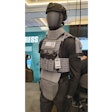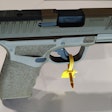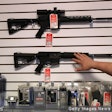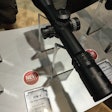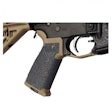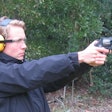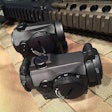The best way to determine the basic combat load you carry as a law enforcement officer is to define the reasons why you need to carry one or more firearms.
Once you have a clear cut single or multiple mission defined, you can use experience and common sense to establish what your basic combat load should be. In military terms, your basic combat load is at least seven 30-round magazines for an M4-style carbine rifle and two spare high-capacity pistol magazines for an issued personal defense weapon. Those who were issued a custom-built 1911 carried as many as seven spare single-column magazines for their .45 ACP pistols.
One World War II veteran of the Pacific Theater told me that once he became an experienced jungle fighter he stopped carrying all the web gear and ammunition pouches that you see actors carrying in war movies. Because of the intense heat of the jungle, he often went on patrols armed with his Thompson submachine gun and one or two extra 30-round stick magazines stuck in his pants pocket. This provided him a grand total of 60 to 90 rounds as a "basic combat load" for routine patrols.
In contrast, a buddy of mine who served in Iraq carried 17 30-round magazines for his M4 carbine and had at least one occasion when he was glad he was that well armed. Another combat veteran who served in the Marine Corps during the War on Terror carried 12 30-round magazines for his M4 carbine and seven eight-round magazines for his issued 1911 .45 ACP pistol.
A U.S. Army soldier I debriefed after the invasion of Iraq said he carried 200 rounds of 9mm ammunition for his pistol and ended up using captured enemy weapons when they ran low on ammunition for their M16 and M4 rifles.
Law enforcement officers are no different and should carry extra ammunition, especially when they know they will be involved in an enforcement action. One thing that drives me crazy is when I see plainclothes personnel such as detectives and federal agents carrying one spare magazine on a combination handcuff case and ammunition carrier.
I also believe in rigorously enforcing a policy of carrying extra ammunition of at least three spare high-capacity pistol magazines and four single-column magazines in your vehicle. I also like the idea of issuing a shoulder carried battle pack or nylon bandoleer that carries up to six 30-round M4 carbine patrol or tactical rifle magazines if you have plans to use a M4 carbine or some other patrol rife on duty.
During my law enforcement career, I found it no real burden or inconvenience to carry one or two spare magazines or one or two extra speed loaders. One trick I learned is to invert double-magazine pouches to make them fit in a way that flatters your body and protrudes less.
You can also comfortably carry a pair of spare single-column or high-capacity magazines by using a DeSantis Double Magazine Ankle Pouch that lets you strap two additional magazines to your ankle as if they were a backup gun. I have also found it to be very easy and comfortable to carry one or two spare magazines in a leather ammunition pouch or in a nylon pouch in the front right pocket of my cargo pants.
If you ever have to lay down suppressing fire to cover the recovery of a downed officer, or if you are compelled to engage heavily armed active shooters such as the two North Hollywood bank robbers, you'll appreciate every round of ammunition that you have at your immediate disposal that you can fire at the enemy.
Do yourself, your fellow officers and your family a big favor and kick things up a notch by carrying at least a few extra rounds of ammunition when you are on and off duty because bad things are always happening to good people. I'm starting to notice that law enforcement officers are not carrying a backup gun on their person because they feel very well armed with a patrol rifle and three 30-round magazines.
The only problem is your rifle isn't always in your hand or close by when you may need immediate access to another handgun. I carried a backup gun at all times and even kept a second firearm close by, when I worked undercover on multi-hundred and multi-thousand-kilo cocaine smuggling deals.
Trust me when I tell you that I was not going down without a fight. Remember, the life you save may be your own!










